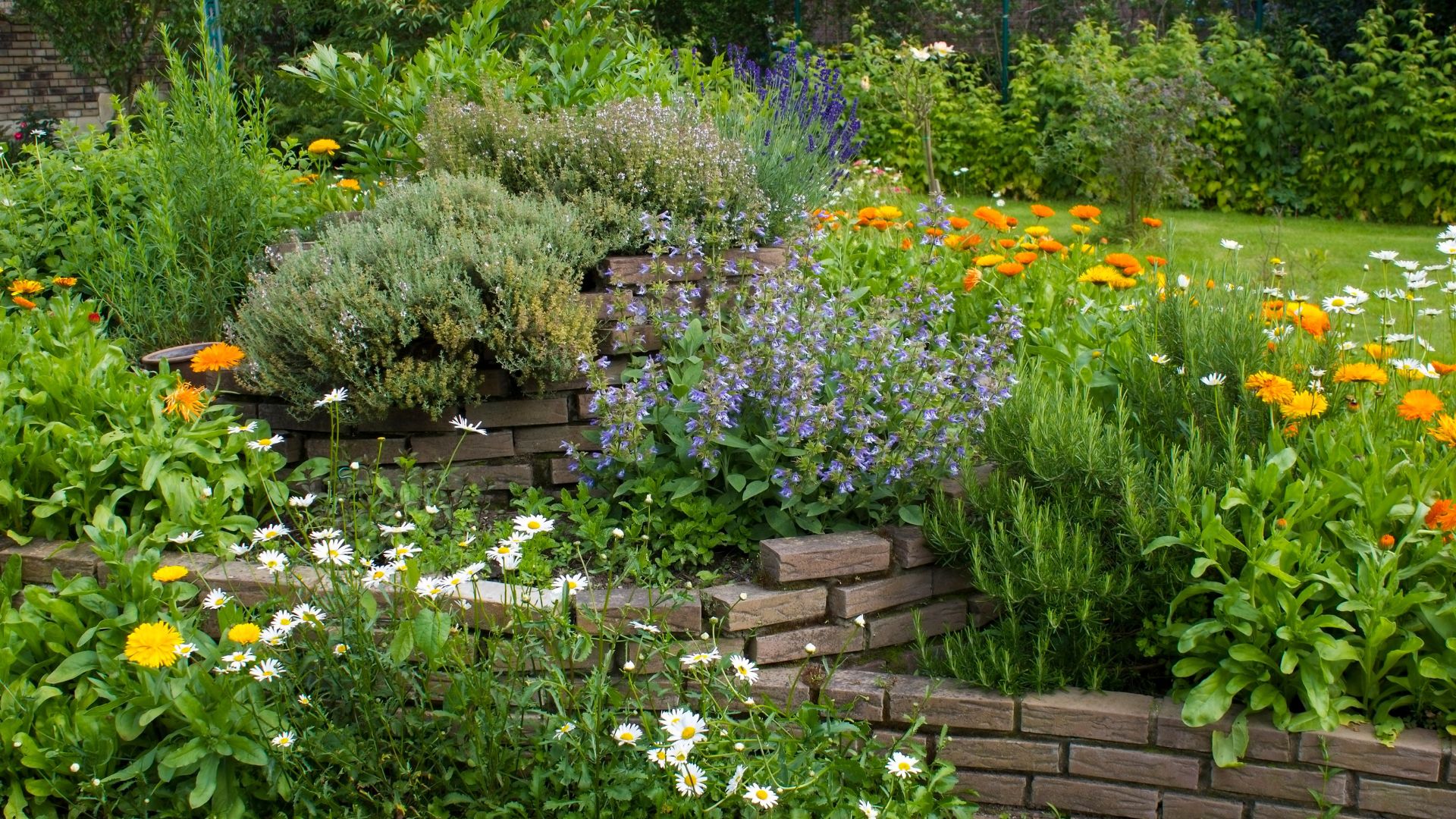
There’s nothing worse for a gardener than spending hours arranging the perfect assortment of plants, only to see them die once the weather gets too warm. All plants need a minimum amount of water and sunlight to survive, as this is how they get their sustenance.
However, different plants require different amounts of each. While some require a lot of sun, others prefer shade. And some need consistent watering while others prefer more arid soil. Just as there is vegetation in even the driest of deserts, you can find plants that will survive in your yard even if you experience severe summer drought. The trick is to choose plants designed for this environment.
Here are 9 of the best plant varieties that can keep up with an arid, sunny climate, so grab hold of your gardening gloves and get planting.
How to choose the right plants
Just like animals, plants have adapted to suit their circumstances. And some plant varieties have learned to tolerate summer heat without much water. One easy strategy for gardeners in warmer regions is to look for local native species that are naturally adapted to the climate of their area. However, that may be too limiting for what you desire from your yard design, so it’s important to look for plants labeled as drought-resistant or tolerant.
Remember, choosing the plant is just the first step; drought-resistant or drought-tolerant plants still need care and attention. But taking this approach is a good way to set yourself up for success, if you live in an area with frequent heat waves or droughts.
1. Lavender
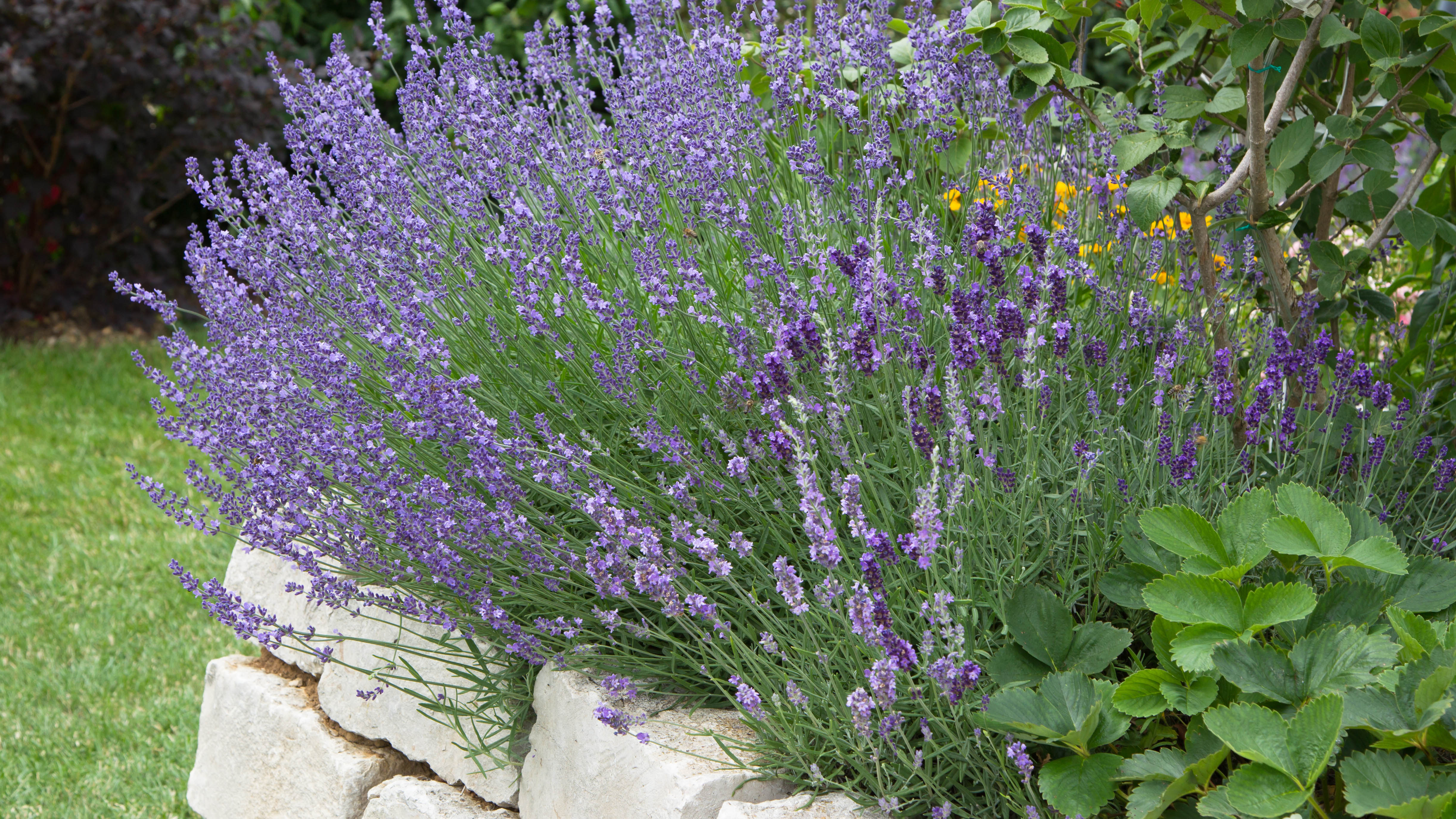
Lavender is one of the more popular and well-known flowers around, thanks to its delicious scent and various aromatherapy properties. What people may not be as familiar with is the plant’s origins in the Mediterranean and the Middle East. These roots mean that lavender is accustomed to hot weather and dry summers, and its learned to thrive despite the harsh conditions.
Lavender enjoys full sun and blooms during the summer months, which is also when its signature purple flowers are most aromatic. It is a good pollinator plant, attracting plenty of bees and other insects, and its vibrant color adds vibrancy to desert landscapes. While some water is good (and necessary), lavender grows best when planted in well-draining soil. It can even be placed in loose soil to help prevent soil erosion and is comfortable with minimal rain during the peak of summer. It also one of the best plants for your patio as you can relax and take in its fragrance.
Lavender should be planted in the spring, when the soil is warm. The plant requires at least six hours of sunlight per day, so don’t position it in shade or partial shade. It grows in a small mound and won’t sprawl or grow too high, which means you don’t need to dedicate too much space for lavender to grow happily. This is a variety that is well suited to a container or a raised bed, so that you can move it indoors during the colder winter months.
Planting zone: 5 to 9
2. Lantana
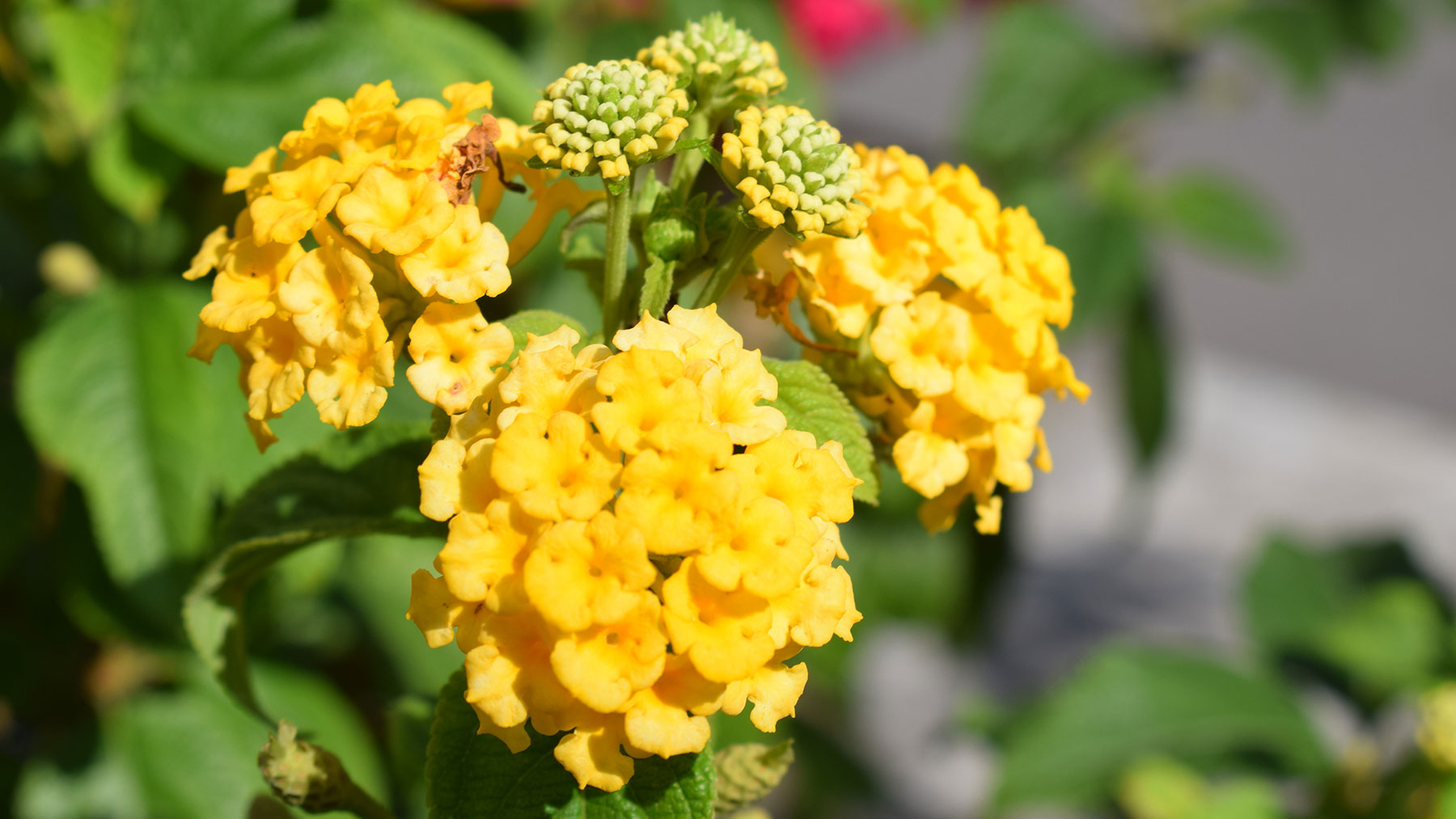
With its brightly colored blooms and sprawling reach, lantana makes a big impact in any warm-weather flower garden. It can easily grow anywhere between two and six feet tall, with some species reaching up to 10 feet in height if grown as a perennial. You can plant them in containers or have them grow up against a wall, thanks to the species’ sprawling nature.
While lantana can be grown in a range of climates, it prefers warmer weather and a lot of sun. However, when it’s grown in colder areas, it must be treated as an annual as it won’t survive the winter frosts. As with lavender, it likes a minimum of six hours of direct sunlight a day and well-draining soil.
If you’re looking to fill up some space in your yard and provide visual height and vibrancy, then lantana is a great option. Choose from several different shades of flower or plant a variety to fill your garden with a rainbow of pretty flower clusters. You’ll even get some butterflies along with your flowers, as lantana is a favorite of those winged insects. However, keep in mind that this fast-growing plant is considered an invasive species in Florida, Arizona and Hawaii.
Planting zone: 7 to 11
3. Catmint
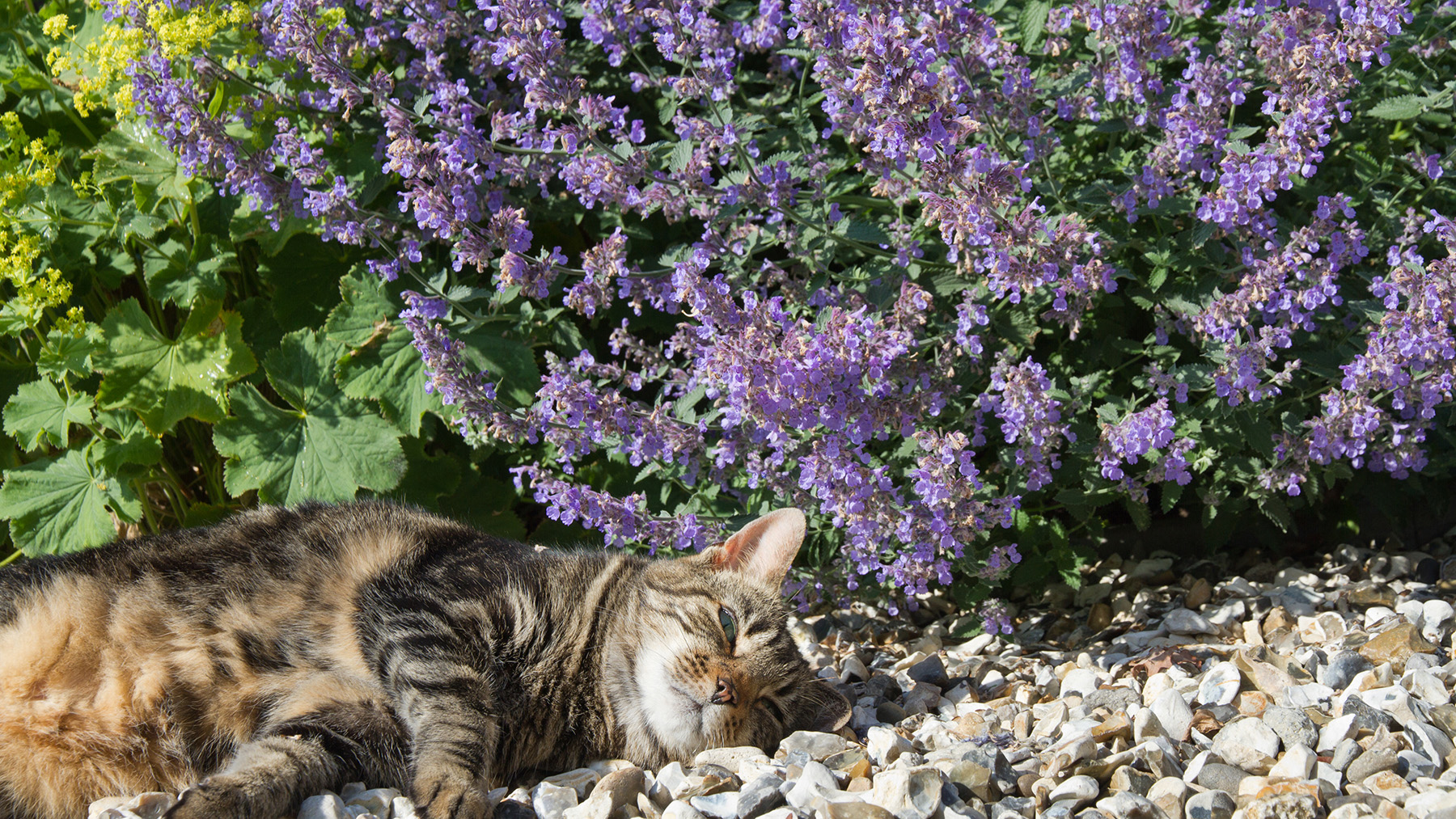
Catmint can look similar to lavender, with its long upright spikes of clustered flowers that come in blue, white or pink. And just like lavender, it can also attract butterflies and other pollinators to your yard. However, it’s part of the mint family (hence the name) and therefore its foliage is grayish-green and pleasantly fragrant. Catmint grows into a roundish shrub, reaching up to two-three feet tall and wide, and attracts a range of pollinators. Its lower height means it can work well as a border to a lawn or alongside a pathway, without blocking out a view of the rest of the yard. You may need to spend a bit of time using your pruning shears to ensure your catmint stays full and compact, as opposed to leggy or floppy.
Unlike most of the other plants on this list, catmint can be planted in both full or partial sun and is generally low maintenance. It requires minimal human attention and so is a great choice for anyone who is new to gardening or not able to dedicate a lot of time to their yard. In fact, some even say that catmint does best when it’s a little neglected.
Catmint will do well during a drought and the hottest summer months, but can also handle cooler weather and is a good all-round option for many and most yards.
Planting zone: 3 to 9
4. Blue fescue
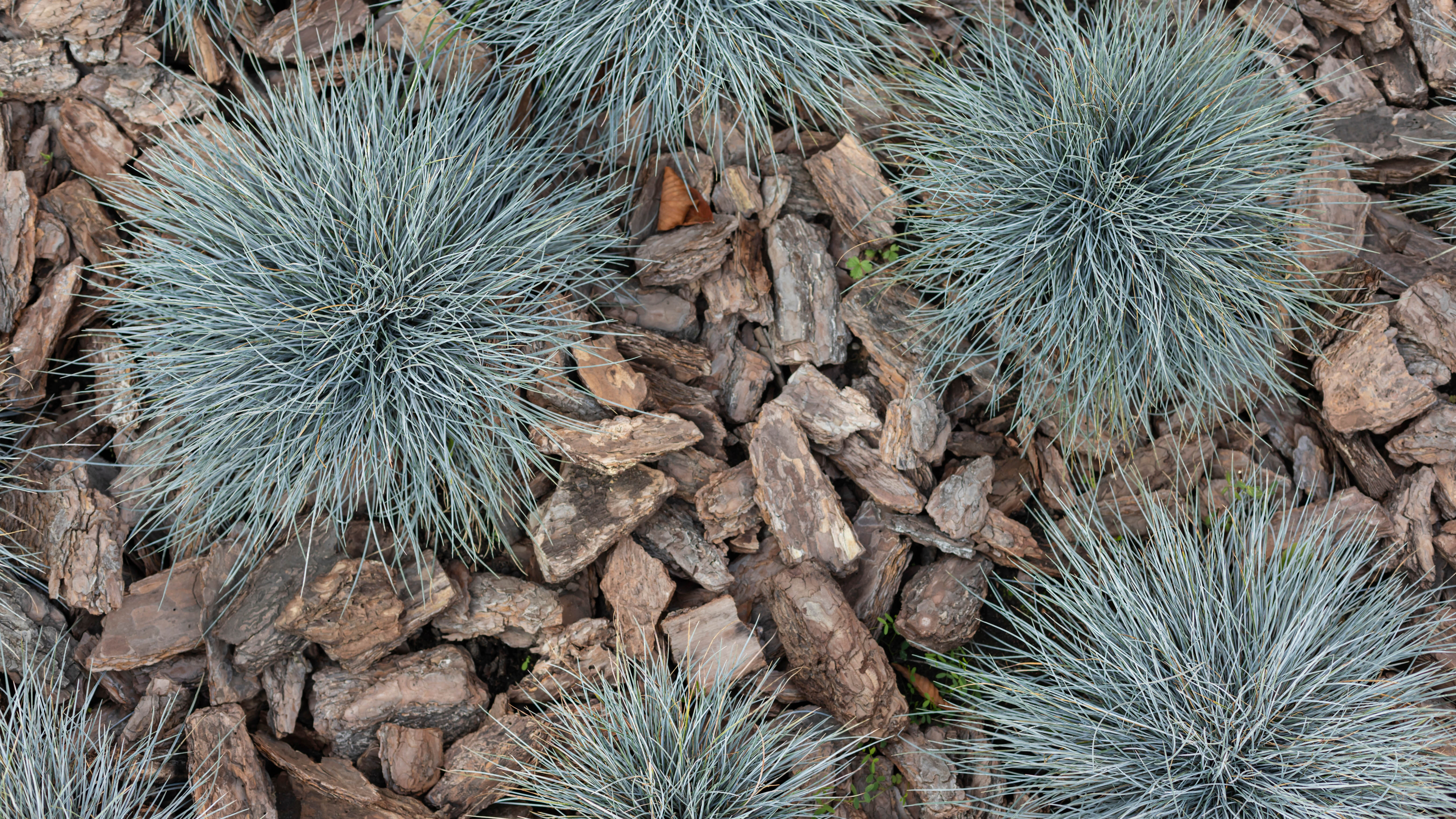
If you’re looking for more of a desert aesthetic, then blue fescue could be a great fit for your yard. Blue fescue is more silvery-toned than vibrant in color and is a grass, rather than a shrub or vine. Its leaves are long, narrow and plentiful, amassing in a compact spiky clump that reaches a foot or so in length. Blue fescue is a natural fit for rock gardens or yards with neutral-toned palettes, but it can also provide useful balance and variation to more traditional designs that are full of flowers and vivid foliage.
As a desert grass, blue fescue is drought-tolerant and enjoys either full or partial sunlight. Greater sun exposure will increase the likelihood that it will flower, with blooms of green and yellow. It prefers to be planted in early spring or late summer, so that it can take root and mature before facing any extremes in temperature — try to avoid very high heat if possible. Blue fescue doesn’t require much extra care and will provide visual interest year-round, thanks to its semi-evergreen foliage.
Planting zone: 4 to 8
5. Purple coneflower
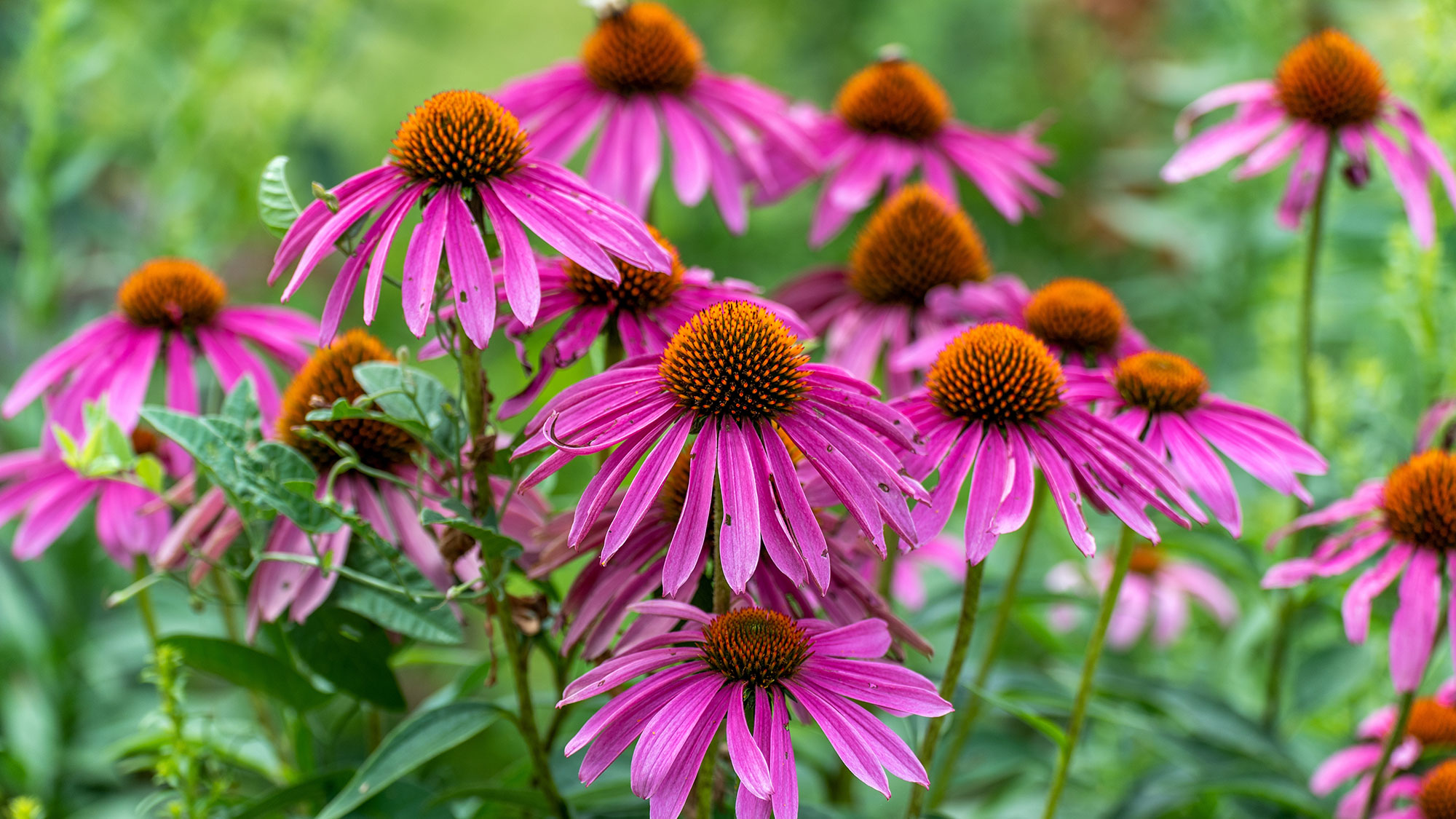
Gardeners looking to plant species that are native to North America — and drought-resistant — should look to purple coneflowers. They look a little like oversized daisies, with a center of densely packed seeds surrounded by contrasting petals that droop downwards, creating a cone shape. While it comes in many colorways, purple coneflower is particularly valued for its hardiness, and not only is this flower drought-resistant, but it is deer resistant too.
However, it will attract pollinators and friendly wildlife to your yard, such as birds during the winter when the seed heads can be easily eaten. Blooms can last for several months if planted early enough.
Coneflowers are quite easy to plant and can thrive in most soil types, and are one of the plants to grow in clay soil, as long as it’s relatively well draining. They can handle full sun exposure and can last through the winter months, making them low-maintenance perennials. This plant doesn’t take up too much space but can reach up to four feet in height as they spread upwards more than outwards. There is also some variation in hue, with petals ranging from orange-red through to purple.
Planting zone: 3 to 9
6. Sage
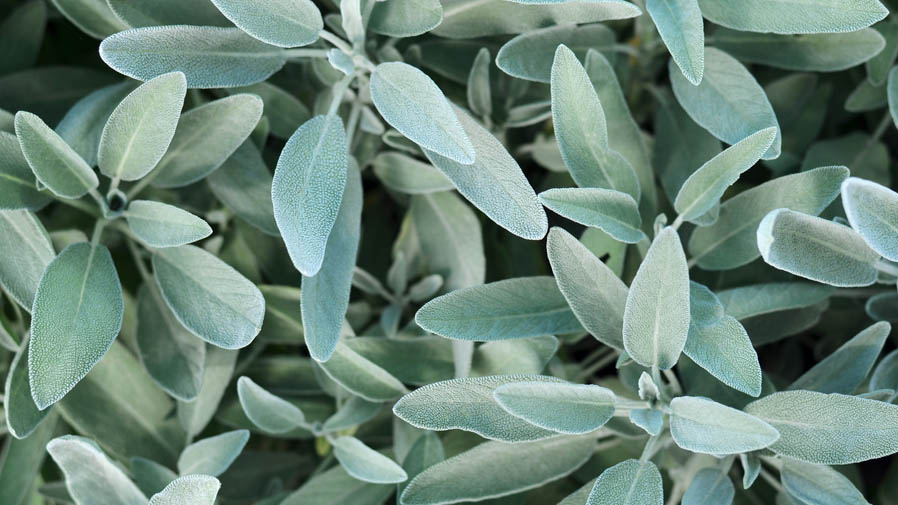
There are many varieties of sage but they are all well-suited to drought conditions, as well as to the cold and to poor quality soil. Within the sage family, you might choose from white sage with its dramatic pale leaves, black sage with its striking stalks of purple flowers, or even hummingbird sage, which has richly colored magenta flowers and bright green foliage. Whichever type you choose, you can expect a lot of pollinators to visit the yard if you’ve planted sage. Plus, it's one of the plants that repel mosquitoes.
These plants are native to California specifically and therefore are a good choice for anyone trying to create a space full of only native plants. Sage has adapted to its environment and now requires minimal additional water once it has taken root in the soil, so you can leave it pretty much unattended.
Although sage is known to many as a useful herb, these varieties also produce beautiful flowers during the summer. A hardy plant, sage enjoys a lot of sunlight, although hummingbird sage is the only variety that also does well in partial shade. This species doesn’t grow particularly tall (1-4 feet in height) so you can comfortably use it as a border plant or in smaller planters or containers.
Planting zone: 5 to 8
7. Lion’s tail
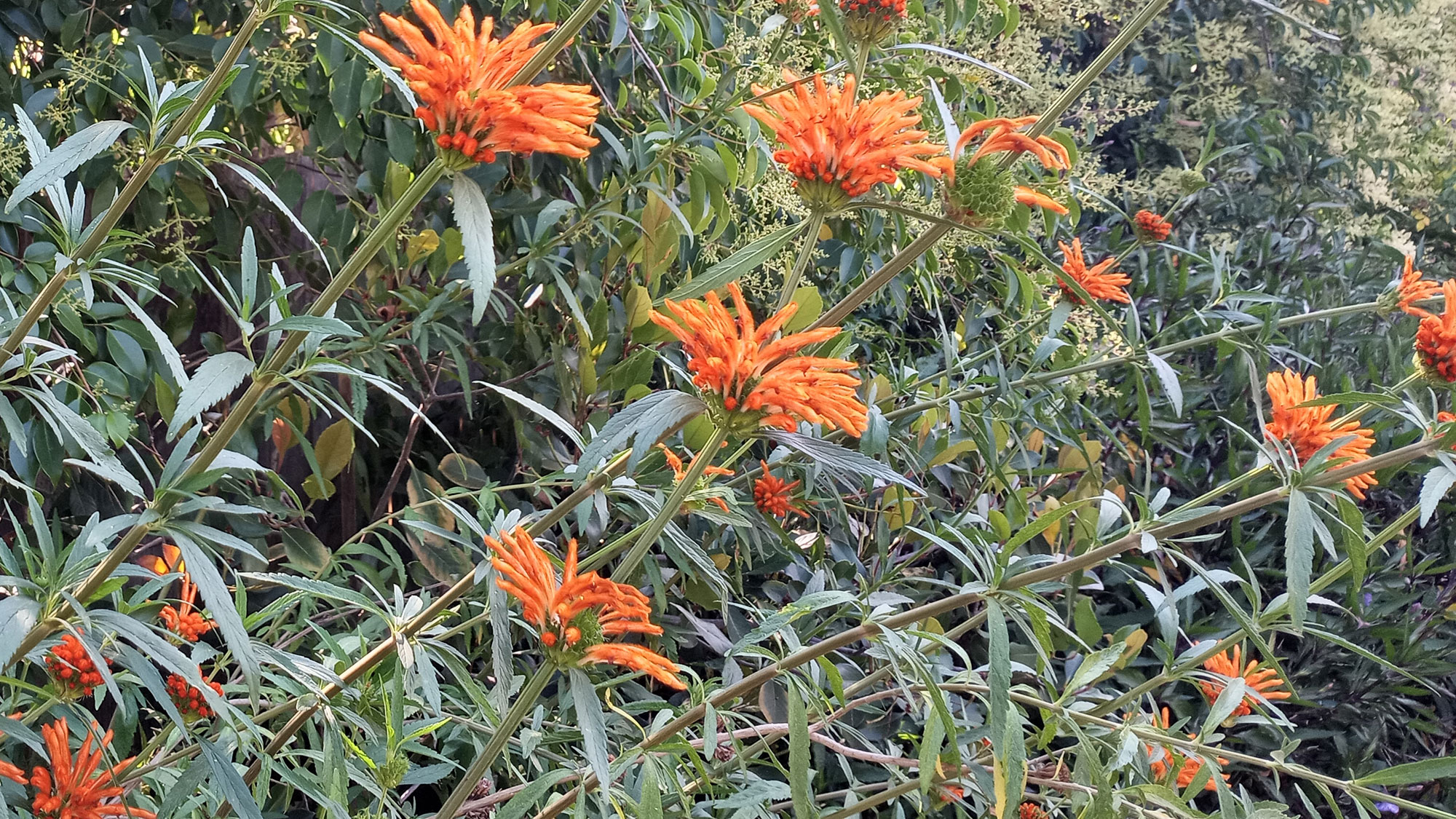
For something a little less common and expected, consider planting lion’s tail in your yard. Originally from South America, this species is comfortable in warm, sunny conditions and can handle a drought just fine, although it thrives best with regular watering. This member of the mint family looks nothing like the herb you see in the grocery store. Instead, it features long stems with tiered balls of flower clusters that are vibrantly orange in color, tubular in shape, and fuzzy in texture. Some say that each individual flower looks a bit like a lion’s tale, hence the name. Some also compare the flower clusters to firework explosions because of the way the flowers fan out from each whorl.
If you do add lion’s tail to your flower garden, you’ll be rewarded with bright colors and visual interest. This plant grows up to six feet in height, so it can create a statement effect in your yard if you allow it to sprawl. It can survive as a perennial if you live in a less extreme climate and the leaves will release a pleasant aroma when bruised, like most mint plants. Lastly, it’s a tough plant that stands up to disease, deer, and most pests, while still attracting pollinators and friendly wildlife, so you can get the best of both worlds.
Planting zone: 9 to 11
8. Yarrow
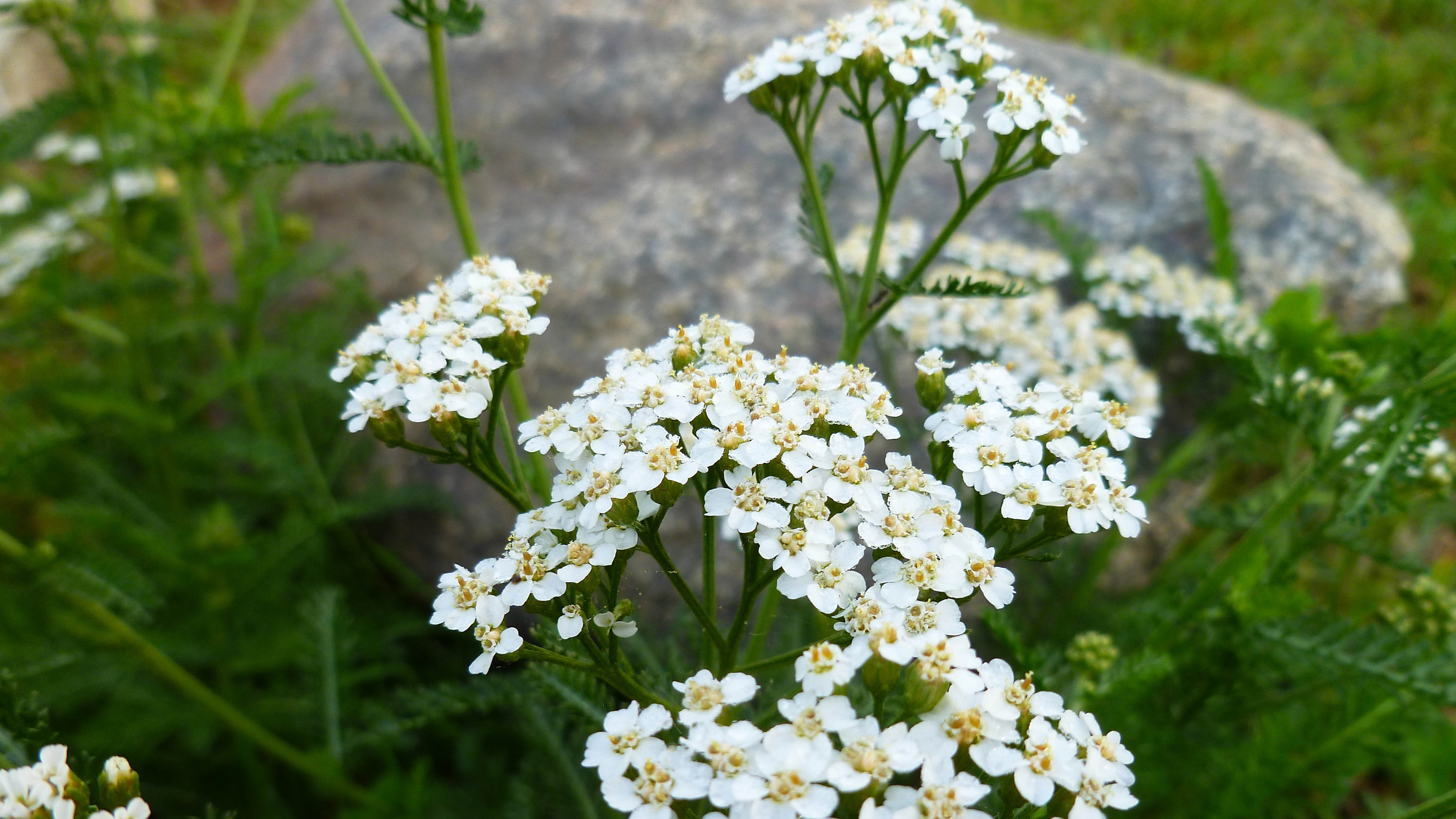
If you want something a little more traditional, then yarrow is a popular choice for all kinds of yards and climates, and it's one of the plants that can grow on rocks. Known for its tight clusters of tiny flowers, this plant comes in red, yellow, pink, white and orange varieties and has fern-like foliage underneath its canopy of blooms. Yarrow flower clusters are quite flat in appearance but densely packed when planted in full sun.
This is an extremely tolerant and hardy plant that is native to North America and able to withstand drought, poor soil, extreme temperatures and humidity. It is disease and pest resistant but attractive to pollinators, so you can encourage butterflies and bees to your yard.
Be sure to plant yarrow in full sun to avoid it growing leggy and sprawling. In general, it can reach one-three feet in height and two-three feet across, so it is a useful plant to plug into any empty space in the yard. Blooms can last for months if planted early enough in the year and maintenance is generally quite low effort, since yarrow is so durable. If you like to have flower cuttings or dried sprays of flowers in your home, then yarrow is well suited for this purpose.
Planting zone: 3 to 9
9. Rosemary

Like sage, rosemary is another fragrant herb that is able to withstand extreme summer temperatures. Originally from the Mediterranean, rosemary is a perennial shrub that prefers hot, dry weather and features fragrant dark green leaves that are commonly used in cooking and for herbal remedies. This is also a flowering plant, with pretty purple flowers blooming in the summer. If planted in good conditions, this herb can reach several feet in height and even hit 10 feet tall, so it will need to be pruned to keep it from getting too leggy.
Rosemary is popular in cooking and you can use entire branches of herbs to help flavor meat, but it's also a great tick-repellent. It is particularly well suited to areas with little rainfall as it prefers to keep its roots dry and needs minimal water to grow. More moderate climates may need to treat this plant as an annual, as it does not enjoy colder temperatures, but Zones 7-10 will be able to enjoy their rosemary plants year after year. Just consider replacing the plant after five years or so, as the best growth occurs when the plant is younger.
Planting zone: 7 to 11







